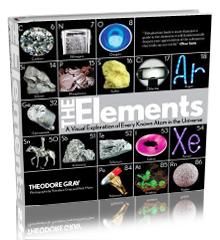Museum-grade sample. | |||
| Sample Image | Spin Video | QuickTimeVR Rotation | |||
| Museum-grade sample. In early 2004 Max Whitby and I started selling individual element samples identical or similar to the samples we use in the museum displays we build. These are top-quality samples presented in attractive forms appropriate to the particular element. They are for sale from Max's website and also on eBay where you will find an ever-changing selection of samples (click the link to see the current listings). This mercury tumbler was meant to be one of those samples, but it turns out that shipping large mercury ampules is prohibitively expensive. Until we find a solution to that problem, these tumbler machines are available only by special arrangement, and only for pickup in central Illinois. As an added element sample bonus, the base is cast of 99.99% pure zinc, poured in a four-part graphite mold I made with my milling machine. The tubes are made by the local university's glass shop, and I fill them with cleaned mercury and argon purge before flame-sealing the filling tube. The machine rotates the tube at two revolutions per minute, allowing the mercury to pour smoothly down and over the indentations in the tube. It's quite lovely. The rotation movie (click the turntable icon in the top right of this description) for this sample relies on the fact that the motor rotating the tube is a synchronous timing motor that runs at exactly two revolutions per minute. The turntable I use to photograph samples from all sides uses a similar synchronous timing motor. (See this picture of my rotation studio.) Normally I photograph each sample in one-degree increments, taking 360 images one every five seconds as the sample takes half an hour to make one complete revolution. For this sample I replaced the turntable motor with one that runs 6 times slower, so I could take 360 images in 30-second intervals as the machine as whole took three hours to make a complete revolution. The motors are locked to the frequency of the power line, and thus to each other, so the tube is in exactly the same position for each image, making it appear stationary even though it's in a position where the mercury is flowing downhill. It makes it look like a magic fountain that flows continuously without any means for the liquid to make it back up to the top. Source: Theodore Gray Contributor: Theodore Gray Acquired: 24 September, 2005 Text Updated: 11 August, 2007 Price: Negotiable Size: 6" Purity: >99% Sample Group: RGB Samples | |||
|

